|
02-04 Trailer for Miles Davis biopic
» Edit Band Information
» Edit Albums
» Add a Review
» Add an Album
» Add News | Miles Davis
Throughout a professional career lasting 50 years, Miles Davis played the trumpet in a lyrical, introspective, and melodic style, often employing a stemless Harmon mute to make his sound more personal and intimate. But if his approach to his instrument was constant, his approach to jazz was dazzlingly protean. To examine his career is to examine the history of jazz from the mid-'40s to the early '90s, since he was in the thick of almost every important innovation and stylistic development in the music during that period, and he often led the way in those changes, both with his own performances ...read more
Throughout a professional career lasting 50 years, Miles Davis played the trumpet in a lyrical, introspective, and melodic style, often employing a stemless Harmon mute to make his sound more personal and intimate. But if his approach to his instrument was constant, his approach to jazz was dazzlingly protean. To examine his career is to examine the history of jazz from the mid-'40s to the early '90s, since he was in the thick of almost every important innovation and stylistic development in the music during that period, and he often led the way in those changes, both with his own performances and recordings and by choosing sidemen and collaborators who forged new directions. It can even be argued that jazz stopped evolving when Davis wasn't there to push it forward.Davis was the son of a dental surgeon, Dr. Miles Dewey Davis, Jr., and a music teacher, Cleota Mae (Henry) Davis, and thus grew up in the black middle class of east St. Louis after the family moved there shortly after his birth. He became interested in music during his childhood and by the age of 12 began taking trumpet lessons. While still in high school, he started to get jobs playing in local bars and at 16 was playing gigs out of town on weekends. At 17, he joined Eddie Randle's Blue Devils, a territory band based in St. Louis. He enjoyed a personal apotheosis in 1944, just after graduating from high school, when he saw and was allowed to sit in with Billy Eckstine's big band, who was playing in St. Louis. The band featured trumpeter Dizzy Gillespie and saxophonist Charlie Parker, the architects of the emerging bebop style of jazz, which was characterized by fast, inventive soloing and dynamic rhythm variations.It is striking that Davis fell so completely under Gillespie and Parker's spell, since his own slower and less flashy style never really compared to theirs. But bebop was the new sound of the day, and the young trumpeter was bound to follow it. He did so by leaving the Midwest to attend the Institute of Musical Art in New York City (renamed Juilliard) in September 1944. Shortly after his arrival in Manhattan, he was playing in clubs with Parker, and by 1945 he had abandoned his academic studies for a full-time career as a jazz musician, initially joining Benny Carter's band and making his first recordings as a sideman. He played with Eckstine in 1946-1947 and was a member of Parker's group in 1947-1948, making his recording debut as a leader on a 1947 session that featured Parker, pianist John Lewis, bassist Nelson Boyd, and drummer Max Roach. This was an isolated date, however, and Davis spent most of his time playing and recording behind Parker. But in the summer of 1948, he organized a nine-piece band with an unusual horn section. In addition to himself, it featured an alto saxophone, a baritone saxophone, a trombone, a French horn, and a tuba. This nonet, employing arrangements by Gil Evans and others, played for two weeks at the Royal Roost in New York in September. Earning a contract with Capitol Records, the band went into the studio in January 1949 for the first of three sessions which produced 12 tracks that attracted little attention at first. The band's relaxed sound, however, affected the musicians who played it, among them Kai Winding, Lee Konitz, Gerry Mulligan, John Lewis, J.J. Johnson, and Kenny Clarke, and it had a profound influence on the development of the cool jazz style on the West Coast. (In February 1957, Capitol finally issued the tracks together on an LP called Birth of the Cool.)Davis, meanwhile, had moved on to co-leading a band with pianist Tadd Dameron in 1949, and the group took him out of the country for an appearance at the Paris Jazz Festival in May. But the trumpeter's progress was impeded by an addiction to heroin that plagued him in the early '50s. His performances and recordings became more haphazard, but in January 1951 he began a long series of recordings for the Prestige label that became his main recording outlet for the next several years. He managed to kick his habit by the middle of the decade, and he made a strong impression playing "'Round Midnight" at the Newport Jazz Festival in July 1955, a performance that led the major label Columbia Records to sign him. The prestigious contract allowed him to put together a permanent band, and he organized a quintet featuring saxophonist John Coltrane, pianist Red Garland, bassist Paul Chambers, and drummer Philly Joe Jones who began recording his Columbia debut, 'Round About Midnight, in October.As it happened, however, he had a remaining five albums on his Prestige contract, and over the next year he was forced to alternate his Columbia sessions with sessions for Prestige to fulfill this previous commitment. The latter resulted in the Prestige albums The New Miles Davis Quintet, Cookin', Workin', Relaxin', and Steamin', making Davis' first quintet one of his better-documented outfits. In May 1957, just three months after Capitol released the Birth of the Cool LP, Davis again teamed with arranger Gil Evans for his second Columbia LP, Miles Ahead. Playing flügelhorn, Davis fronted a big band on music that extended the Birth of the Cool concept and even had classical overtones. Released in 1958, the album was later inducted into the Grammy Hall of Fame, intended to honor recordings made before the Grammy Awards were instituted in 1959.In December 1957, Davis returned to Paris, where he improvised the background music for the film L'Ascenseur pour l'Echafaud (Escalator to the Gallows). Jazz Track, an album containing this music, earned him a 1960 Grammy nomination for Best Jazz Performance, Solo, or Small Group. He added saxophonist Cannonball Adderley to his group, creating the Miles Davis Sextet, who recorded the album Milestones in April 1958. Shortly after this recording, Red Garland was replaced on piano by Bill Evans and Jimmy Cobb took over for Philly Joe Jones on drums. In July, Davis again collaborated with Gil Evans and an orchestra on an album of music from Porgy and Bess. Back in the sextet, Davis began to experiment with modal playing, basing his improvisations on scales rather than chord changes.This led to his next band recording, Kind of Blue, in March and April 1959, an album that became a landmark in modern jazz and the most popular disc of Davis' career, eventually selling over two million copies, a phenomenal success for a jazz record. In sessions held in November 1959 and March 1960, Davis again followed his pattern of alternating band releases and collaborations with Gil Evans, recording Sketches of Spain, containing traditional Spanish music and original compositions in that style. The album earned Davis and Evans Grammy nominations in 1960 for Best Jazz Performance, Large Group, and Best Jazz Composition, More Than 5 minutes; they won in the latter category.By the time Davis returned to the studio to make his next band album in March 1961, Adderley had departed, Wynton Kelly had replaced Bill Evans at the piano, and John Coltrane had left to begin his successful solo career, being replaced by saxophonist Hank Mobley (following the brief tenure of Sonny Stitt). Nevertheless, Coltrane guested on a couple of tracks of the album, called Someday My Prince Will Come. The record made the pop charts in March 1962, but it was preceded into the bestseller lists by the Davis quintet's next recording, the two-LP set Miles Davis in Person (Friday & Saturday Nights at the Blackhawk, San Francisco), recorded in April. The following month, Davis recorded another live show, as he and his band were joined by an orchestra led by Gil Evans at Carnegie Hall in May. The resulting Miles Davis at Carnegie Hall was his third LP to reach the pop charts, and it earned Davis and Evans a 1962 Grammy nomination for Best Jazz Performance by a Large Group, Instrumental. Davis and Evans teamed up again in 1962 for what became their final collaboration, Quiet Nights. The album was not issued until 1964, when it reached the charts and earned a Grammy nomination for Best Instrumental Jazz Performance by a Large Group or Soloist with Large Group.In 1996, Columbia Records released a six-CD box set, Miles Davis & Gil Evans: The Complete Columbia Studio Recordings, that won the Grammy for Best Historical Album. Quiet Nights was preceded into the marketplace by Davis' next band effort, Seven Steps to Heaven, recorded in the spring of 1963 with an entirely new lineup consisting of saxophonist George Coleman, pianist Victor Feldman, bassist Ron Carter, and drummer Frank Butler. During the sessions, Feldman was replaced by Herbie Hancock and Butler by Tony Williams. The album found Davis making a transition to his next great group, of which Carter, Hancock, and Williams would be members. It was another pop chart entry that earned 1963 Grammy nominations for both Best Instrumental Jazz Performance by a Soloist or Small Group and Best Instrumental Jazz Performance by a Large Group. The quintet followed with two live albums, Miles Davis in Europe, recorded in July 1963, which made the pop charts and earned a 1964 Grammy nomination for Best Instrumental Jazz Performance by a Small Group or Soloist with Small Group, and My Funny Valentine, recorded in February 1964 and released in 1965, when it reached the pop charts.By September 1964, the final member of the classic Miles Davis Quintet of the 1960s was in place with the addition of saxophonist Wayne Shorter to the team of Davis, Carter, Hancock, and Williams. While continuing to play standards in concert, this unit embarked on a series of albums of original compositions contributed by the band members, starting in January 1965 with E.S.P., followed by Miles Smiles (1967 Grammy nomination for Best Instrumental Jazz Performance by a Small Group or Soloist with Small Group [7 or Fewer]), Sorcerer, Nefertiti, Miles in the Sky (1968 Grammy nomination for Best Instrumental Jazz Performance by a Small Group or Soloist with Small Group), and Filles de Kilimanjaro. By the time of Miles in the Sky, the group had begun to turn to electric instruments, presaging Davis' next stylistic turn. By the final sessions for Filles de Kilimanjaro in September 1968, Hancock had been replaced by Chick Corea and Carter by Dave Holland. But Hancock, along with pianist Joe Zawinul and guitarist John McLaughlin, participated on Davis' next album, In a Silent Way (1969), which returned the trumpeter to the pop charts for the first time in four years and earned him another small-group jazz performance Grammy nomination. With his next album, Bitches Brew, Davis turned more overtly to a jazz-rock style. Though certainly not conventional rock music, Davis' electrified sound attracted a young, non-jazz audience while putting off traditional jazz fans.Bitches Brew, released in March 1970, reached the pop Top 40 and became Davis' first album to be certified gold. It also earned a Grammy nomination for Best Instrumental Arrangement and won the Grammy for large-group jazz performance. He followed it with such similar efforts as Miles Davis at Fillmore East (1971 Grammy nomination for Best Jazz Performance by a Group), A Tribute to Jack Johnson, Live-Evil, On the Corner, and In Concert, all of which reached the pop charts. Meanwhile, Davis' former sidemen became his disciples in a series of fusion groups: Corea formed Return to Forever, Shorter and Zawinul led Weather Report, and McLaughlin and former Davis drummer Billy Cobham organized the Mahavishnu Orchestra. Starting in October 1972, when he broke his ankles in a car accident, Davis became less active in the early '70s, and in 1975 he gave up recording entirely due to illness, undergoing surgery for hip replacement later in the year. Five years passed before he returned to action by recording The Man With the Horn in 1980 and going back to touring in 1981.By now, he was an elder statesman of jazz, and his innovations had been incorporated into the music, at least by those who supported his eclectic approach. He was also a celebrity whose appeal extended far beyond the basic jazz audience. He performed on the worldwide jazz festival circuit and recorded a series of albums that made the pop charts, including We Want Miles (1982 Grammy Award for Best Jazz Instrumental Performance by a Soloist), Star People, Decoy, and You're Under Arrest. In 1986, after 30 years with Columbia, he switched to Warner Bros. Records and released Tutu, which won him his fourth Grammy for Best Jazz Instrumental Performance.Aura, an album he had recorded in 1984, was released by Columbia in 1989 and brought him his fifth Grammy for Best Jazz Instrumental Performance by a Soloist (on a Jazz Recording). Davis surprised jazz fans when, on July 8, 1991, he joined an orchestra led by Quincy Jones at the Montreux Jazz Festival to perform some of the arrangements written for him in the late '50s by Gil Evans; he had never previously looked back at an aspect of his career. He died of pneumonia, respiratory failure, and a stroke within months. Doo-Bop, his last studio album, appeared in 1992. It was a collaboration with rapper Easy Mo Bee, and it won a Grammy for Best Rhythm & Blues Instrumental Performance, with the track "Fantasy" nominated for Best Jazz Instrumental Solo. Released in 1993, Miles & Quincy Live at Montreux won Davis his seventh Grammy for Best Large Jazz Ensemble Performance.Miles Davis took an all-inclusive, constantly restless approach to jazz that had begun to fall out of favor by the time of his death, even as it earned him controversy during his lifetime. It was hard to recognize the bebop acolyte of Charlie Parker in the flamboyantly dressed leader with the hair extensions who seemed to keep one foot on a wah-wah pedal and one hand on an electric keyboard in his later years. But he did much to popularize jazz, reversing the trend away from commercial appeal that bebop began. And whatever the fripperies and explorations, he retained an ability to play moving solos that endeared him to audiences and demonstrated his affinity with tradition. At a time when jazz is inclining toward academia and repertory orchestras rather than moving forward, he is a reminder of the music's essential quality of boundless invention, using all available means. « hide |
Similar Bands: John Coltrane, Karlheinz Stockhausen, Carlos Santana, Duke Ellington, Louis Armstrong |
|
| LPs |  | Panthalassa: The Remixes
1999
|
 | Doo Bop
1992
|
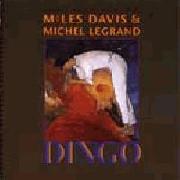 | Dingo
1991
|
 | Aura
1989
|
 | Amandla
1989
|
 | Tutu
1986
|
 | You're Under Arrest
1985
|
 | Decoy
1984
|
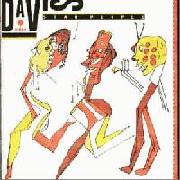 | Star People
1983
|
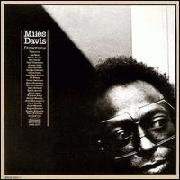 | Directions
1981
|
 | The Man with the Horn
1981
|
 | Circle in the Round
1979
|
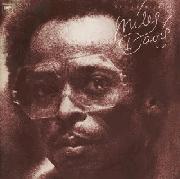 | Get Up with It
1974
|
 | Big Fun
1974
|
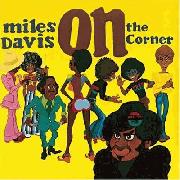 | On the Corner
1972
|
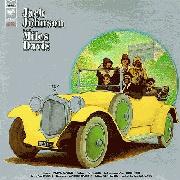 | Jack Johnson
1971
|
 | Bitches Brew
1970
|
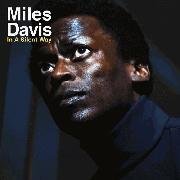 | In a Silent Way
1969
|
 | Filles de Kilimanjaro
1968
|
 | Nefertiti
1968
|
 | Miles in the Sky
1968
|
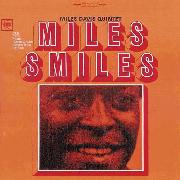 | Miles Smiles
1967
|
 | Sorcerer
1967
|
 | E.S.P
1965
|
 | Quiet Nights
1963
|
 | Seven Steps to Heaven
1963
|
 | Steamin' With the Miles Davis Quintet
1961
|
 | Someday My Prince Will Come
1961
|
 | Sketches of Spain
1960
|
 | Kind of Blue
1959
|
 | Workin' With Miles Davis and the Quintet
1959
|
 | Milestones
1958
|
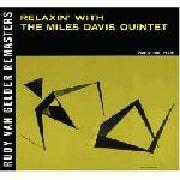 | Relaxin' With the Miles Davis Quintet
1958
|
 | Porgy and Bess
1958
|
 | Ascenseur pour l'echafaud OST
1958
|
 | Cookin' With the Miles Davis Quintet
1957
|
 | 'Round About Midnight
1957
|
 | Miles Ahead
1957
|
 | Collectors' Items
1956
|
 | Miles Davis and Milt Jackson Quintet/Sextet
1956
|
 | The New Miles Davis Quintet
1955
|
 | Miles Davis All Star Sextet
1955
|
 | Miles Davis All Stars, Volume 1
1955
|
 | Blue Moods
1955
|
 | Miles Davis All Stars, Volume 2
1955
|
 | The Musing of Miles
1955
|
 | Miles Davis Quartet
1954
|
 | Miles Davis, Vol. 3
1954
|
 | Miles Davis with Sonny Rollins
1954
|
 | Miles Davis Quintet
1954
|
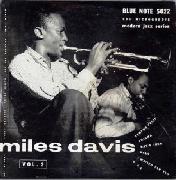 | Miles Davis, Vol. 2
1953
|
 | Blue Period
1953
|
 | The Compositions of Al Cohn
1953
|
 | Young Man With A Horn
1952
|
 | The New Sounds
1951
|
| EPs |  | Rubberband
2019
|
| Live Albums |  | The Lost Septet
2020
|
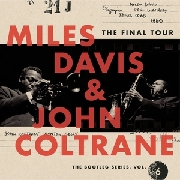 | The Final Tour: The Bootleg Series, Vol. 6
2018
|
 | Miles at the Fillmore 1970: Series,Vol.3
2014
|
 | Live in Europe 1969: The Bootleg Series, Vol. 2
01/29/2013
|
 | Bitches Brew Live
2011
|
 | Live in Europe 1967: The Bootleg Series Vol. 1
2011
|
 | Live at the 1963 Monterey Jazz Festival
2007
|
 | Live at Free Trade Hall 1960 [2CD]
2007
|
 | Live In Copenhagen 1960
2005
|
 | Live In Den Haag 1960
2005
|
 | In Person Saturday Night At The Blackhawk
2003
|
 | In Person Friday Night at the Blackhawk
2003
|
 | Live at Newport
2001
|
 | Miles Davis Live
2000
|
 | Live Around The World
1996
|
 | 1969 Miles - Festiva de Juan Pins
1993
|
 | Miles & Quincy Live at Montreux
1993
|
 | Green Dolphin Street: Live In Holland 1960
1992
|
 | Live in Stockholm 1960
1992
|
 | At Last!
1990
|
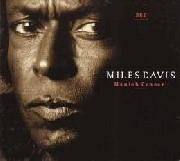 | Munich Concert
1988
|
 | We Want Miles
1982
|
 | Dark Magus
1977
|
 | Miles Davis at Plugged Nickel, Chicago Vol. 2
1976
|
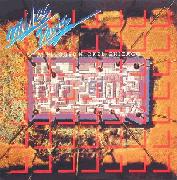 | Miles Davis at Plugged Nickel, Chicago
1976
|
 | Pangaea
1976
|
 | Agharta
1975
|
 | Live at Philharmonic Hall
1972
|
 | At Fillmore: Live at the Fillmore East
1970
|
 | Live Evil
1970
|
 | Black Beauty
1970
|
 | Miles in Tokyo
1969
|
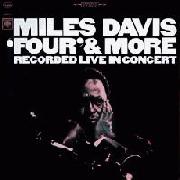 | 'Four' and More
1966
|
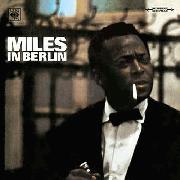 | Miles In Berlin
1965
|
 | My Funny Valentine: Miles Davis in Concert
1965
|
 | Miles Davis in Europe
1964
|
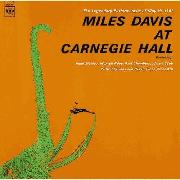 | At Carnegie Hall
1962
|
 | Miles & Coltrane
1958
|
 | The Complete Amsterdam Concert
1957
|
 | 1955 - Live at the Hi-Hat Boston
1955
|
|
| Compilations |  | That’s What Happened 1982-1985: The Bootleg Series
2022
|
 | Take Off: The Complete Blue Note Albums
2014
|
 | The Original Mono Recordings
11/11/2013
|
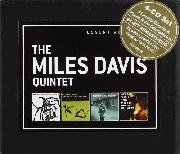 | Essential Albums: Cookin'/Relaxin'/Workin'/Steamin
2011
|
 | Blue Flame
2011
|
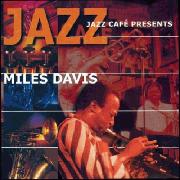 | Jazz Cafe Presents
2007
|
 | The Complete On the Corner Sessions
2007
|
 | Legendary Prestige Quintet Sessions [Box.4CD]
2006
|
 | Poetics of Sound: 1954-1959
2005
|
 | The Complete Jack Johnson Sessions
2003
|
 | Love Songs, Vol. 2
2003
|
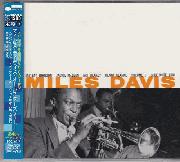 | Miles Davis, Vol. 1 [Japan]
2003
|
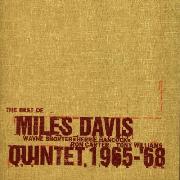 | The Best of 1965-1968
2003
|
 | Highlights from Complete Miles Davis at Montreux
2002
|
 | Early Miles
2001
|
 | The Essential Miles Davis
2001
|
 | The Best of Miles Davis & John Coltrane: 1955-1961
2001
|
 | Super Hits
2001
|
 | Ballads [Sony France]
2001
|
 | The Legends Collection
2001
|
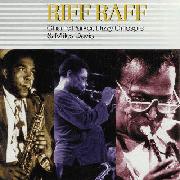 | Riff Raff
2001
|
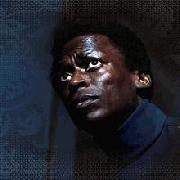 | The Complete In a Silent Way Sessions
2001
|
 | The Miles Davis & John Coltane Box Set
2000
|
 | Birth of Bop
1999
|
 | Out of the Blue [Hallmark]
1999
|
 | Meets Miles Davis
1998
|
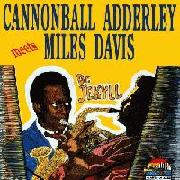 | Dr. Jekyll
1998
|
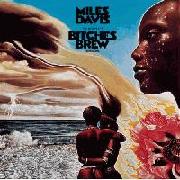 | The Complete Bitches Brew Sessions
1998
|
 | 1945-1946, Vol. 1
1998
|
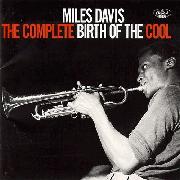 | The Complete Birth Of The Cool
1998
|
 | Miles Davis' Greatest Hits
1997
|
 | Autumn Leaves
1997
|
 | Ballads and Blues
1996
|
 | Workin' & Steamin'
1993
|
 | The Best of Miles Davis
1992
|
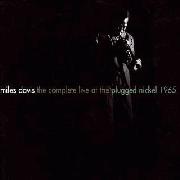 | The Complete Live 1965 at the Plugged Nickel
1992
|
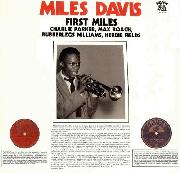 | First Miles
1990
|
 | Miles Davis: The Columbia Years 1955-1985
1988
|
 | Water Babies
1976
|
 | The Cellar Door Sessions
1970
|
 | Plays for Lovers
1966
|
 | Miles Davis and the Modern Jazz Giants
1958
|
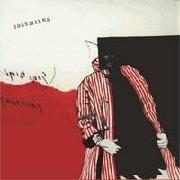 | 1958 Miles
1958
|
 | Birth of the Cool
1957
|
 | Miles Davis, Volume 1
1956
|
 | Dig
1956
|
 | Bag's Groove
1954
|
 | Walkin' With Miles
1954
|
 | Blue Haze
1954
|
 | Four
1953
|
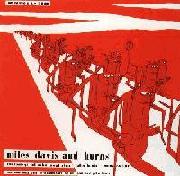 | Miles Davis And Horns
1953
|
 | Conception
1951
|
Contributors: sevEn, MiguelAngel, rockandmetaljunkie, PappyMason, YankeeDudel, Hoenir, ThrashingWhiplash, liledman, Nagrarok, matrixx333, Yield, rattlehead42147, FR33L0RD, sixtyten, dudeinthepassinglane, Hewitt, Damrod, Donchivo, dakotadsmith, Sowing, Jom, nylonhair, ReefaJones, tempest--, Sinternet, mrfixit, Supercoolguy64, TwigTW, TheLongShot, Winesburgohio, MrHarrison, Asdfp277, Samppaliini, RoundOnEndHiInMiddle, PowerBlitz, Frippertronics, Zig, Snowdog808, Havey, rockandmetaljunkie, Insurrection, Mad., KILL, BMDrummer, Gwyn., taylormemer, CaptainDooRight, SgtPepper, Activista anti-MTV, CocioSeize, Voivod, Skyler,
|
